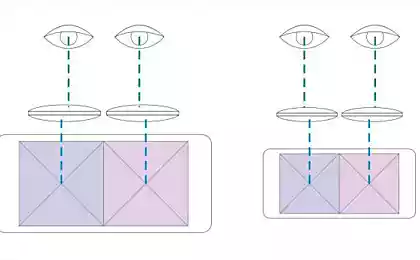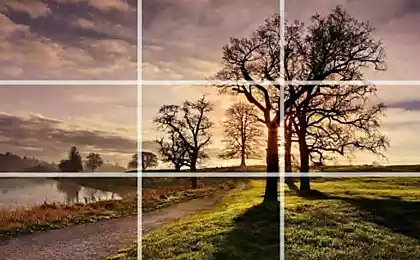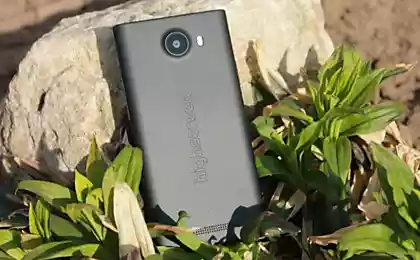199
The Art of Photography: How to Take Beautiful Pictures on Your Phone

Introduction. In the digital age, the camera is always at our fingertips, whether it’s a professional camera.
SLR camera or smartphone in your pocket. In the past, photography was considered a privilege.
Today, a huge number of pictures are taken literally on the go. But what if you want to?
Not just recording moments, but creating real masterpieces? It is possible to achieve high quality using
Is it a regular phone? This article is designed to answer such questions and introduce beginner photographers.
with the fundamental principles of the art of photography, which will help to shoot beautifully and interestingly, independently
from technology in hand.
According to the Pew Research Center, more than 80%
The adult population in the modern world constantly uses smartphones, and according to Statista,
Millions of photos are posted online every day. Among all this content, many users are interested.
How to stand out and turn your photography into a real visual art.
Below you will find recommendations on how to achieve quality results, improving technical and creative skills.
1. Why a smartphone is not a hindrance, but an advantage
Smartphones have become so “smart” that many modern models are able to compete with old “soap boxes”.
Or even approach system cameras under certain conditions. However, their main strength is mobility.
Photo mode is available in one click, and software algorithms help process images on the fly.
Do not forget about the huge set of applications for retouching: from simple filters in Instagram to professional ones.
Editors like Lightroom Mobile or Snapseed. You can adjust color, brightness or contrast.
Right on the phone without using the computer.
Important point: when you shoot on the phone, you often find yourself in the thick of events, without wasting time on the phone.
launching complex equipment and installing a tripod. This allows you to catch moments of spontaneity, expression of emotions or
unusual angles that are easy to miss with a more formal approach. If you learn to use it rationally
This spontaneity - your portfolio will be replenished with truly unique staff.
When to Consider a Professional Camera
Of course, smartphones will not replace the DSLR or mirrorless camera in all aspects. For example, in the reporting room
shooting under insufficient light or in subject photography for glossy magazines. But if you're just getting started.
the way in photography, you should first learn to "feel the frame" and understand the basic principles of composition, light
and color harmony. The phone here is the perfect tool for practice.

2. The basics of composition: how to build the perfect frame
One of the key elements of any good photo is composition. This is a kind of "architecture" of the picture.
Determining which objects and in what order attract the viewer’s attention. Below are a few principles that
They guard harmony.
2.1. Rule of thirds
The most famous technique is to divide the frame into nine conventional rectangles using two horizontal rectangles.
and two vertical lines. The main rule is: try to place key objects at the intersection of these objects.
or along the lines. So you will avoid the effect of “centering”, and the picture will become more dynamic and pleasing to the eyes.
2.2. Leading lines and geometry
Lines and shapes in the frame direct the viewer's gaze. These can be paths, fences, bridges or even lines.
shadows. If you use the leading lines correctly, you can achieve an impressive sense of perspective and depth.
Even if the photo is taken on the phone.
2.3. Contrasts and colour
Bright contrasts can be a great way to draw attention to the main details. Play with the flowers:
contrasts of warm and cold tones, bright and pastel shades can transform even the most ordinary landscape.
Monochrome gamma can also be appropriate if you are trying to emphasize the texture or shape of the object.
3. Light: Your best friend (and sometimes your enemy)
Remember that the word “photography” is translated from Greek as “painting with light”. It's light that creates volume.
It gives textures and gives dynamics. However, it must be handled carefully: the wrong time of day
or the location of the source, you risk getting overlights or too deep shadows that will spoil a good one.
shot.
3.1. Golden Hour
Photographers around the world love the “golden hour” – the time just after sunrise and just before sunset. These moments
Sunlight is the softest and warmest, which creates a beautiful atmosphere in landscape and portrait pictures.
If you shoot at noon, be prepared for sharp shadows, so look for diffuse light (in the shade of trees or in the shade of trees).
buildings) or use reflectors, if available.
3.2. Playing with flash and artificial lighting
The front flash of the smartphone usually does not give an artistic effect, but it can be used as a flash.
filling the light source in low light conditions. In more advanced situations, it is better to experiment.
with external sources: table lamps or special lamps. It’s important not to fill the whole scene with white.
bright light, and arrange soft highlights and emphasize the texture of objects.
4. Smartphone settings and useful applications
For more subtle control, it's important to know how to work with the camera's settings - even if it's in the phone.
Modern devices offer manual mode (Manual), allowing you to adjust exposure, ISO, balance
white and shutter speed. It is important to learn how to use this functionality to achieve the intended
results, rather than relying on automatic mode.
- Manual Mode: Allows you to independently manage the parameters of the picture.
- RAW footage: Some phone models support the RAW format, which gives more
opportunities in post-processing. - White balance (WB): Change WB to adjust color temperature - from warm shades
To the cold. - Image stabilization: If the smartphone provides optical stabilization (OIS),
Use it for clearer photos in low light.
For photo processing, mobile applications can work wonders: Lightroom Mobile, VSCO, Snapseed, PicsArt
They all provide tools for color correction, fixing flaws and adding art filters.
The main thing is not to overdo it and remember that excessive processing can spoil the naturalness of the picture.

5. Practical tips and life hacks for beginners
Aside from general principles, there are plenty of small tricks that help improve results quickly.
- Keep the lens clean: Smartphones often lie in your pocket or bag, which is why you have to
The camera can collect dust and prints. Wash it before shooting with a soft cloth. - Use the grid in the cell: In most applications, there is an option to turn on the grid “3×3”
The rule of thirds makes it easier to build the right composition. - Shoot the series: Quick serial mode will allow you to choose the best of several
Consistent personnel. - Experiment with different angles: Don’t be afraid to sit down, lie down on the ground or get up.
above the object. An unusual angle can make the picture more interesting. - Use reflections and shadows: Look for puddles, showcases and glass surfaces - from their
It is possible to get creative staff.
Conclusion
Photography on a smartphone has long ceased to be perceived as a “second-rate” way to create a visual image.
content. With a competent approach to the composition, lighting and processing, even the simplest phone can become a phone.
A tool for implementing bright creative ideas. Mastering the basic principles - the rule of thirds, leading lines,
The subtleties of controlling light and color – you will gradually learn to create rich, emotionally appealing
Photos that are nice to see and want to share with friends.
The most important thing in photography is constant practice and analysis of your work. Don't hesitate critically.
Look at failed shots, draw conclusions and try again. Be inspired by the masters of the past and the modern
Geniuses of visual art, experiment with angles, plots and processing. And remember that the beautiful
Photographs are born not so much because of expensive technology, but because of your personal vision and skill.
"grab" the perfect moment.
Culinary traditions of different countries: interesting facts and recipes
Surprising facts about the brain that you probably didn’t know























